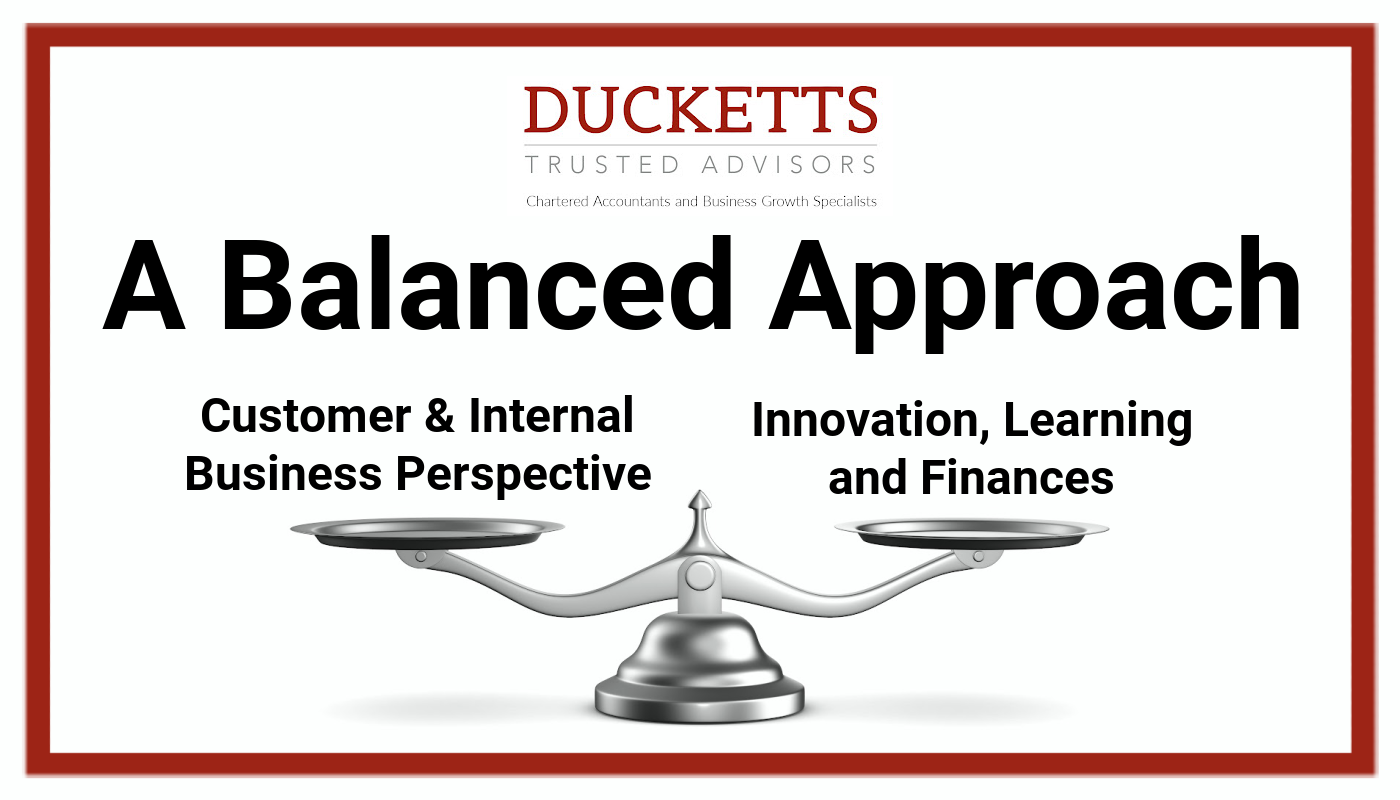A Balanced Approach
Published:

How Ducketts uses a whole-business evaluation process to help you make better financial decisions.
Accountants are often accused of only being interested in numbers. While at Ducketts we appreciate that the numbers need to add up, we see the value of using a balanced business scorecard that evaluates all the activities that drive productivity, profitability and the overall success of your business.
The Balanced Business Scorecard – What is it?
The balanced business scorecard is a system that covers all the areas of a business’s performance. The one that we find most useful looks at four perspectives:
1. Customer Perspective – How do customers see us?
One of the most important keys to creating value is to satisfy customers. It is essential to focus on what the customers want. The customer perspective can be split into:
- Customer outcome measures e.g. customer satisfaction, customer retention, new customer acquisition and profitability.
- Customer performance drivers e.g. product quality/reliability, time taken to fulfil the order and price.
2. Internal Business Perspective – What do we need to excel at?
This is generally split into three areas:
- Innovation process e.g. identifying customers’ emerging needs and developing products to meet those needs.
- Operations process – producing the products and delivering them to the customers.
- After sales process – following through the needs of customers after the sale has completed.
3. Innovation and Learning Perspective – How can we continue to improve and create value?
This perspective focuses on the measures that develop the business. Investment in people, systems and internal organisational processes can sometimes be overlooked. Again, this is often split into three areas:
- Employees e.g. employee productivity, staff turnover, employee satisfaction and recognition/reward.
- Information & Knowledge systems - the systems that enable everyone in the company to do their jobs better. e.g. availability of customer information to employees, quality of information systems and quality of communication and knowledge systems.
- Internal Learning – everyone should be able to learn from failures and successes e.g. sharing of best practice, staff suggestion scheme, staff training.
4. Financial Perspective – How do we look to our shareholders?
If we get non-financial measures right, they should drive better financial performance. There are usually four main categories:
- Cost Reduction e.g benchmark costs against competitors, unit costs of product/production and fixed costs as a % of sales.
- Asset Utilisation e.g. Working capital ratios, return of capital employed for each type of asset.
- Growth e.g. sales growth rate, revenue from new customers and our share of the customer’s business.
- Risk Management e.g. the % of high-risk customers, the sales order book, variation between forecast and actual results.
By evaluating these 4 key areas, we can identify points of strength and weakness. Helping you to make better informed financial decisions and improving the overall profitability (and overall success) of your business.
Contact us to start improving the profitability of your business.
Martyn Wright martyn@chrisduckett.co.uk
Latest Posts
The Budget 2025
Welcome to the Team, Adam Wright!
Volatile, Uncertain, Complex and Ambiguous.
Meet The Team - Phil Taylor
Tax Tips 2025

